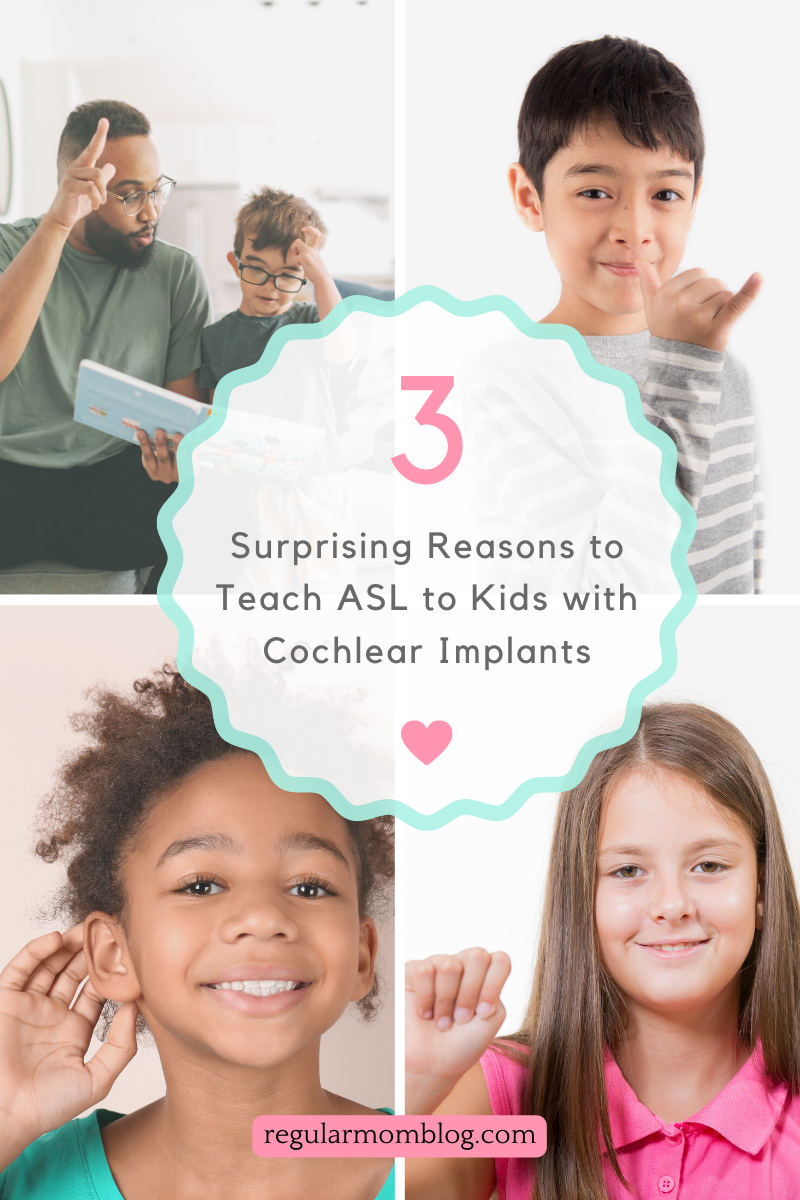advocacy
It’s time to get clear on a language strategy for your child so that you can consistently practice language in your home and watch your child’s communication soar in less time!
Welcome!
I want to show you how to build better language skills at home so you can also parent with clarity and confidence!
Categories
hearing loss
sensory activities
sign language
1:1 Language Coaching
These are the kinds of resources that you will find on my blog!
Happy reading!
Benefits of Sign Language for Kids with Cochlear Implants
February 15, 2023
Why should my child learn American Sign Language (ASL) if they can hear with cochlear implants? This is a common question from parents, and even a hot debate in Facebook groups. However, there are some practical benefits of sign language that might surprise you. In this post we are going to talk about the reasons why you might consider teaching sign language to your child with cochlear implants.

sign language HELPS WITH “ LISTENING”
A common misconception about the use of cochlear implants is that they “fix” or “cure” deafness.
As the technology becomes more widely used, we are learning that “hearing” is very individual, and people with cochlear implants hear in different ways.
That is to say- not all hearing is equal, even with the cochlear implant.
Some people might hear great with cochlear implants.
Other people might still struggle with the effects of hearing loss, even with cochlear implants.
Sometimes, even with the help of cochlear implants, a person might miss part of the conversation due to extra, background noise at a gathering.
Listening fatigue can also be a reason that a cochlear implant wearer might not catch part of a sentence or conversation.
This is where the benefits of sign language shines through. Using American Sign Lanaguage gives a person who wears cochlear implants a visual representation of language so that they don’t miss out on a part of the conversation because they couldn’t hear a word or a phrase.
COMMUNICATE WITHOUT WEARING COCHLEAR IMPLANTS
A child with cochlear implants simply does not wear their cochlear implants 24/7, despite the constant reminders from audiologists and speech therapists!
It’s impossible to always keep the cochlear implant on the heads of crawling babies, and toddlers might throw off their devices in anger (ask me how I know!).
There are also bath times and quiet time before bed when they most likely are not wearing their cochlear implants.
In the space of time that a child wants a hearing break or aren’t wearing their cochlear implants, sign language provides a perfect bridge to still be able to communicate with your child in a way that isn’t overstimulating them with noise and honors their right to choose to hear or not hear in that moment.
sign language PROVIDES A SPACE IN THE DEAF COMMUNITY
Kids who wear cochlear implants hold a unique position in the world. They have one foot in the deaf world, and one foot in the hearing world.
Knowing this, it would make sense to expose a child with cochlear implants to both spoken and signed forms of communication. This truly opens up their community of people who they can talk to and relate to!
If learning sign Language seems way too overwhelming for you, just know that I get it!
We didn’t start learning sign language fully until my second child was 4.5 years old, yet we have still been able to communicate with both of our boys with cochlear implants.
Please be encouraged that you don’t have to start out learning the entire language of ASL. You can totally start with just a few signs and work up to learning more.
Over the years of learning signs and incorporating the signs into our family life, my family has noticed the benefits of sign language to communicate better with our kids!
Don’t forget to sign up to Teach Your Kids to Sign!
more sign language resources
A Grace-Filled Approach to ASL
3 Practical Tips to Learn ASL Without Adding More to Your Day

tell me more!
tell me more!
@alemerinobranding.co
DESIGNED BY: ALE MERINO BRANDING CO.
COACHING
Navigation
PODCAST
ABOUT
HOME
Legal
PRIVACY POLICY
TERMS & CONDITIONS
Let's connect
EMAIL hello@raisingdeafkids.com
BLOG